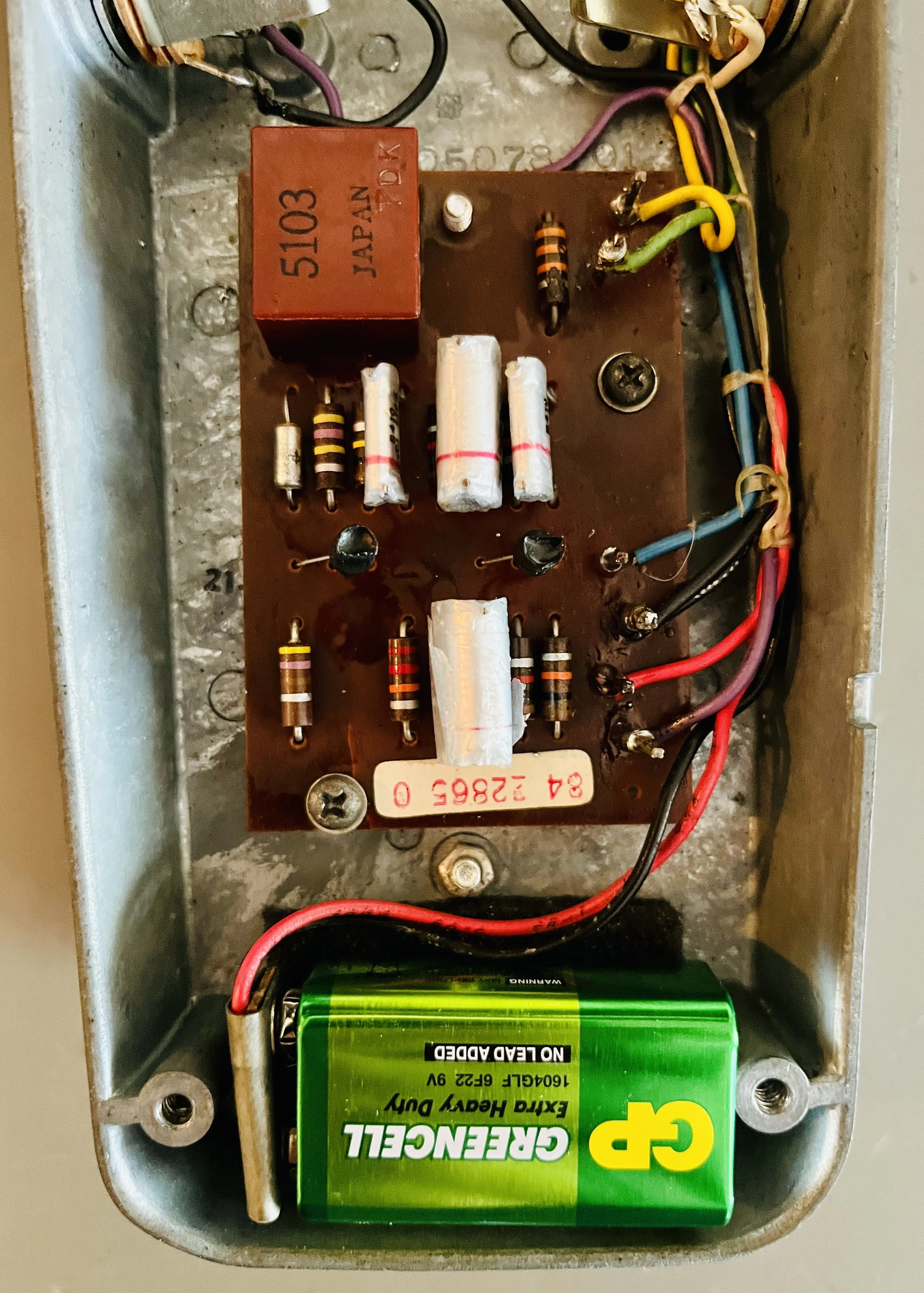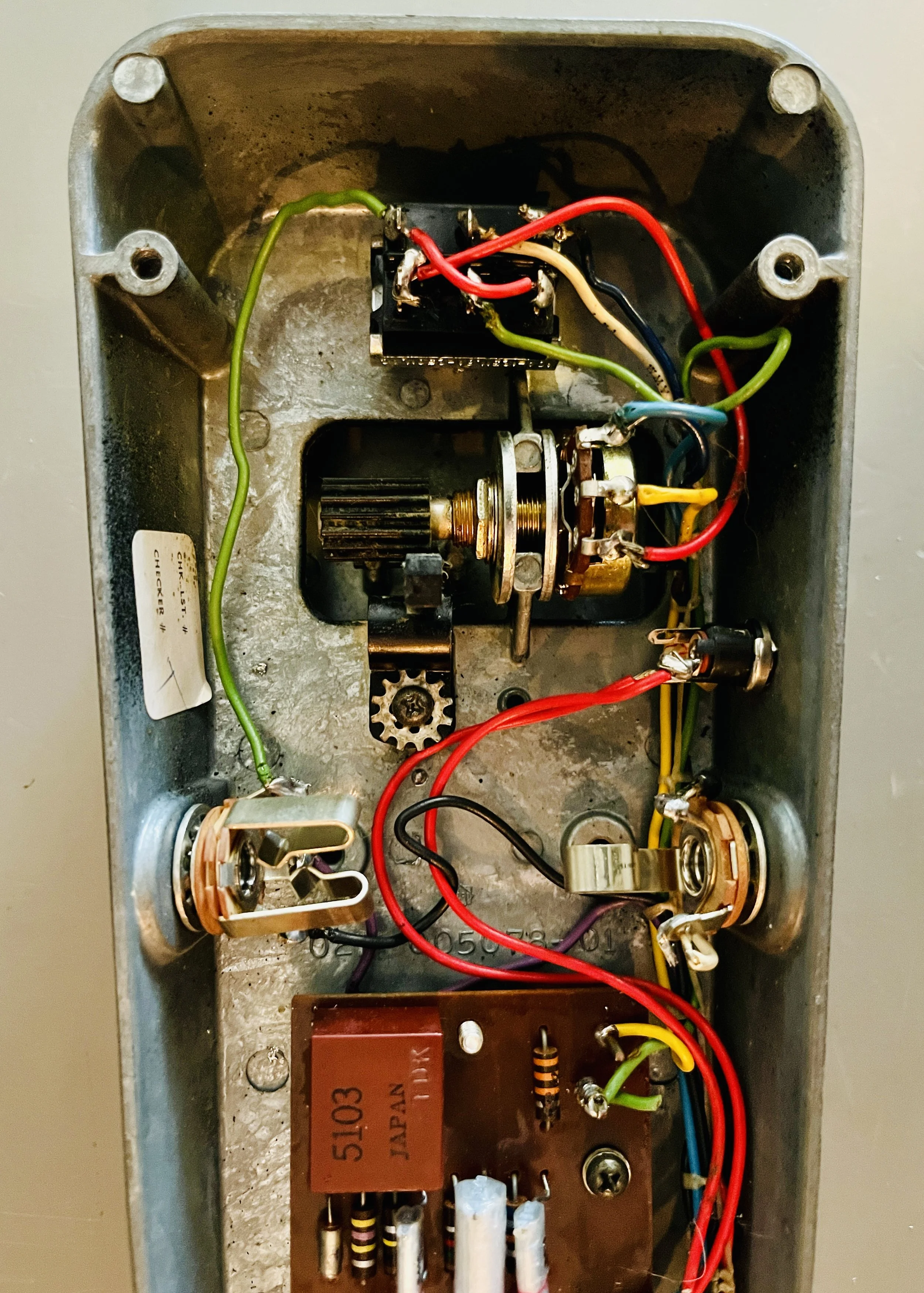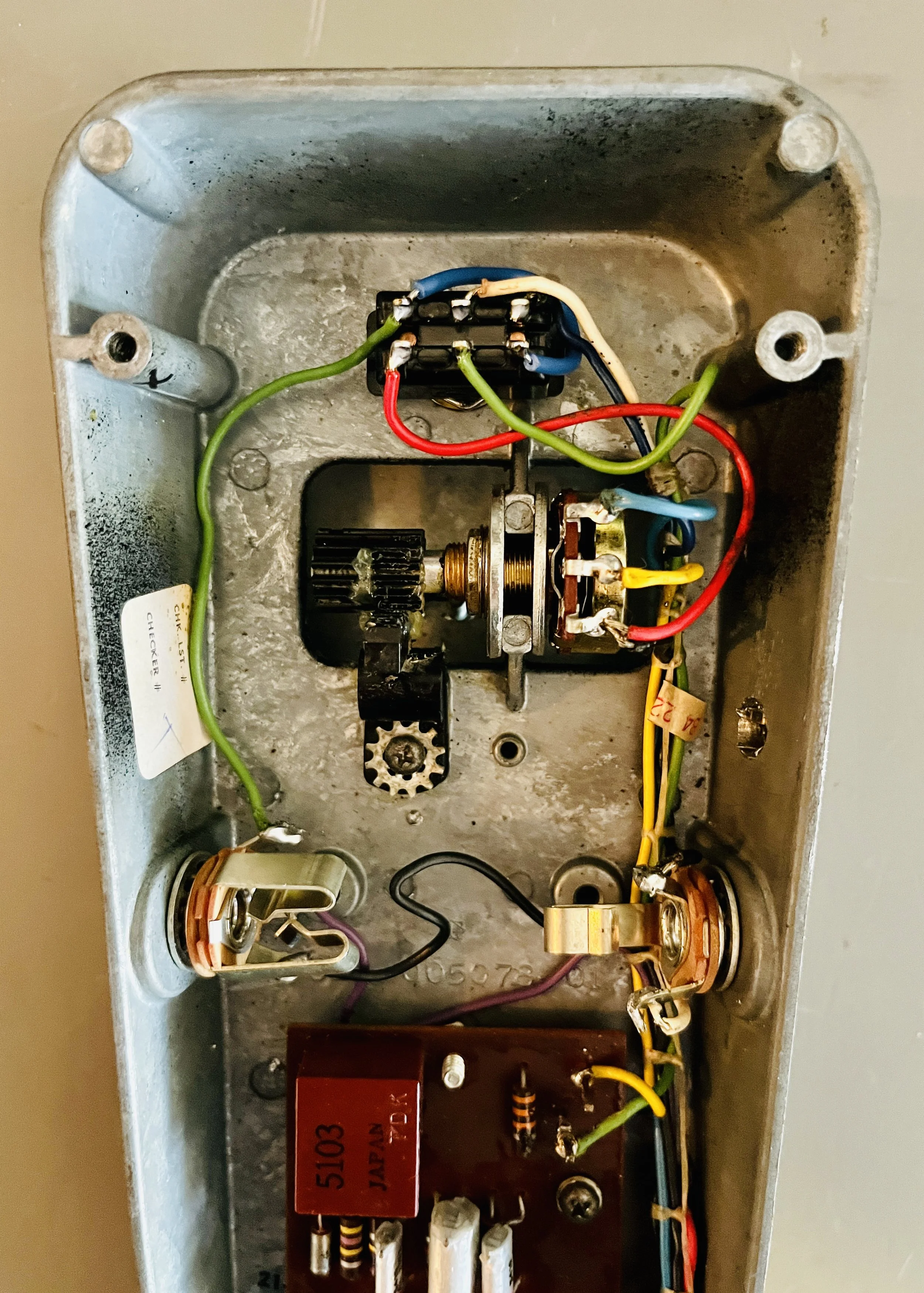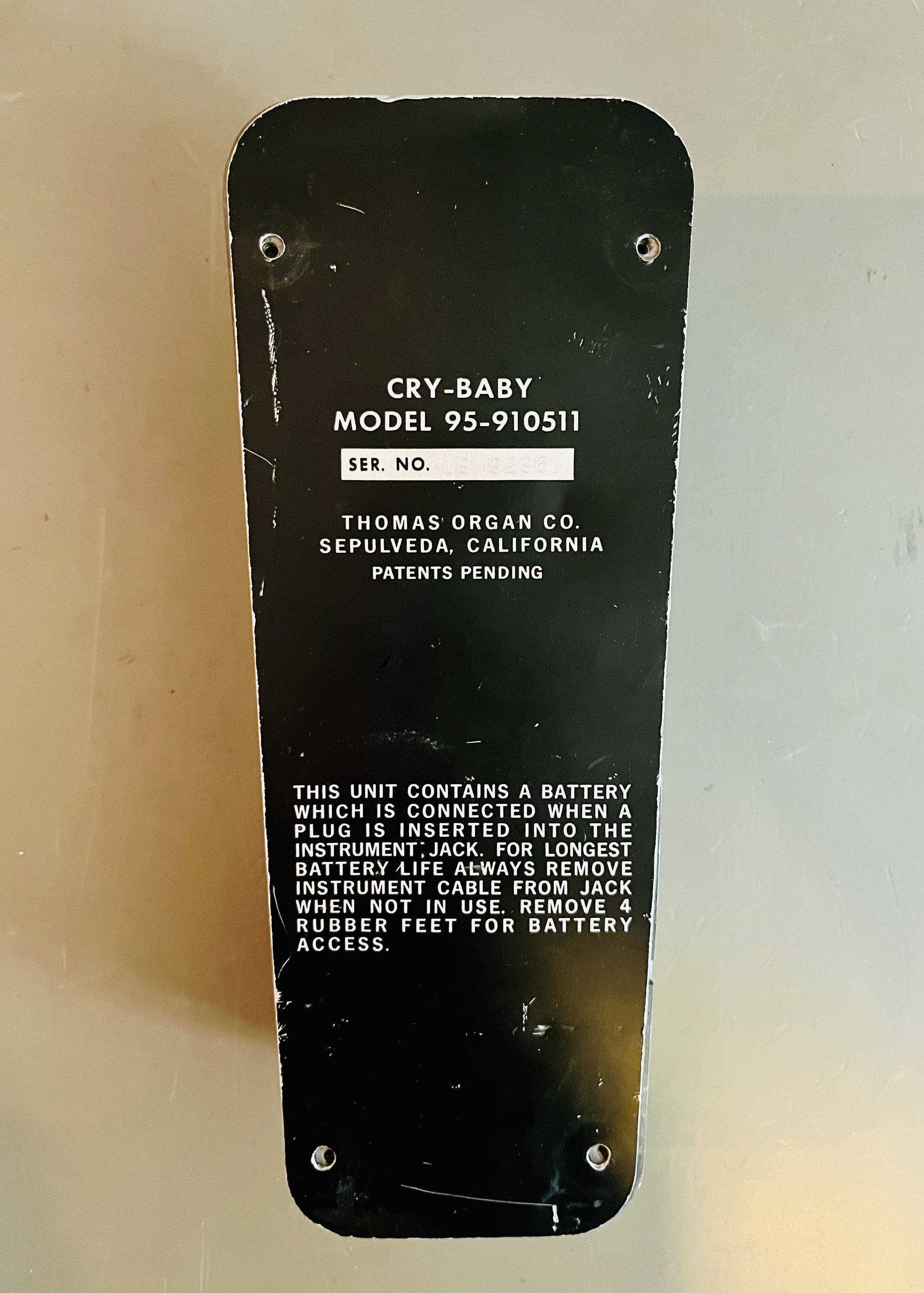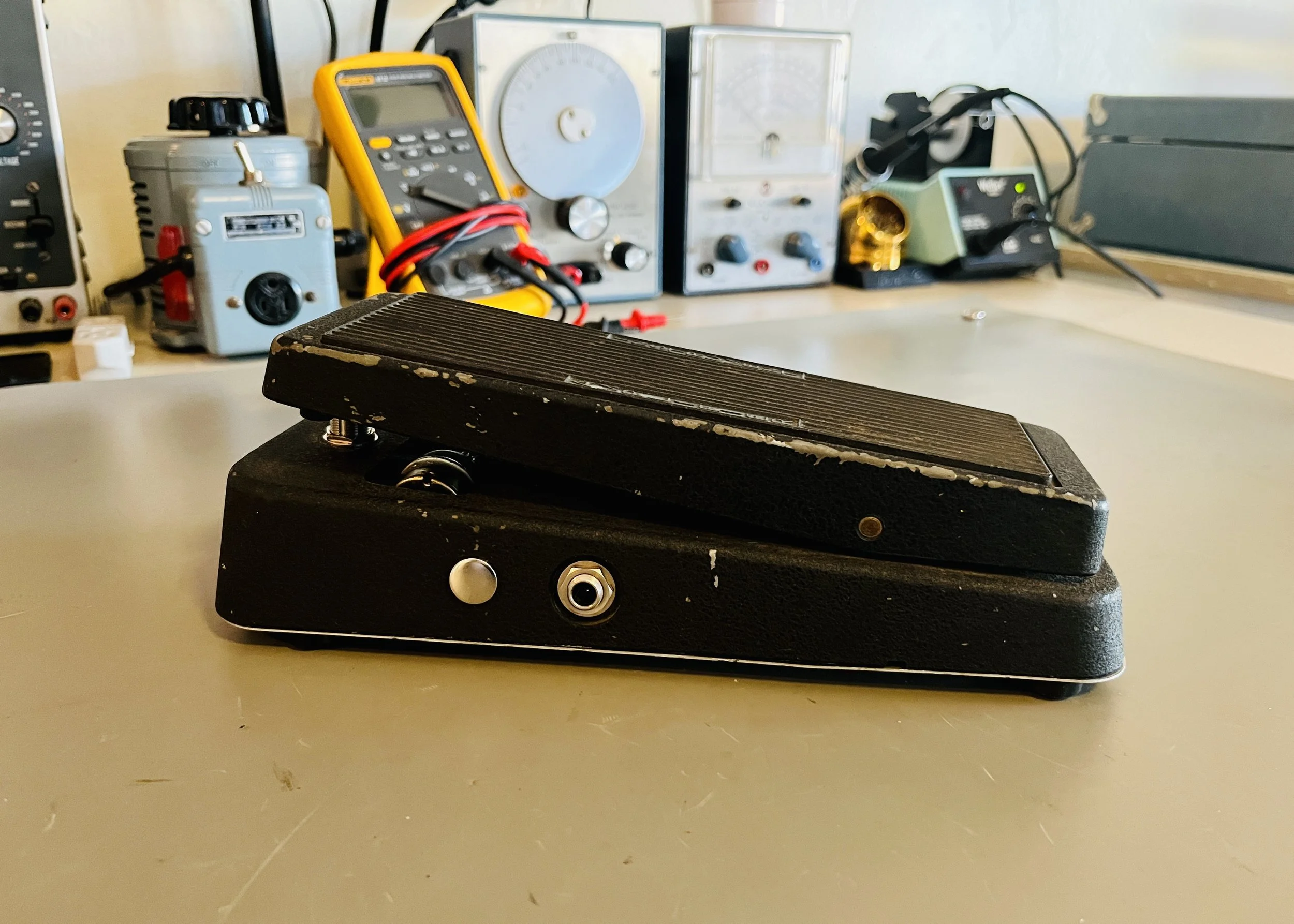1976 Thomas Organ Co. Cry Baby Wah
The Cry Baby Wah was first introduced in 1967 and manufactured at the Thomas factory in Sepulveda CA. Later that year production was moved to EME (Eko) in Italy. Production would eventually move back to the USA in the mid 1970’s and then later on in the early 1980’s the whole thing was bought out by Dunlop who continues to make them today. Aside from aesthetics, the Crybaby was a virtual clone of the Vox V846 Wah-Wah - originally named the Clyde McCoy Wah-Wah. Wah pedals were intended to be effects that were used exclusively by Brass and Woodwind players - to mimic the already used mechanical wah effect that trumpeters like Clyde McCoy (the original sponsor/namesake of the pedal) were famous for. As Vox recognized that the true sales potential for the Vox wah was for guitar, they dropped their association with Clyde McCoy and renamed the pedal the V846 Vox Wah-Wah. Thomas provided the V846 Vox Wah to their authorized Vox dealers while offering the virtually identical Cry Baby to all other music shops. The original pedals were popularized by guitarists such as Jimi Hendrix, Eric Clapton, and David Gilmour.
This pedal came in the shop in bad mechanical shape and having had some poor quality electronic work/mods done in the past. A 9 Volt DC jack was added incorrectly and the customer wanted the pedal taken back to original condition with the exception of making the ON/OFF switch True-Bypass to avoid the tone-suck that came with these pedals originally.
A new vintage replica Dunlop brand DPDT wah foot-switch was installed and wired in True-Bypass. The incorrectly installed DC jack and all associated wiring was taken out and covered with a snap in chassis hole cover - all other wiring was cleaned up. Installed DC jacks cannot just be put in a vintage pedal with no power filtering or diode protection circuits, which is why it was removed - the customer wanted battery only, rather than added parts/circuit complexity. The pot was cleaned out with De-Oxit and the rack and pinion setup was cleaned and then greased for smooth operation. A new felt pad was installed on the treadle opposite the foot-switch, and new rubber standoffs were glued in place on the ends of the treadle. The switch, standoffs, and felt pad were all height adjusted to provide the perfect amount of resistance/ease for switching ON and OFF. A new foam strip was glued in place for the battery to not wiggle around and come loose in the chassis - as the original had disintegrated. One of the screw holes in the cast metal shell had been completely stripped out and had to be drilled and re-tapped with 6-32 threads at a greater depth so the back panel could be unscrewed repeatedly for battery replacements in the coming years. That was easily most of the labor on this. A new set of rubber feet were installed with new high quality screws.
A new vintage spec correct Carbon-Zinc battery was installed to provide the right resistance to the circuit and give good vintage tone. Yes, there actually is an audible difference between modern Alkaline or Lithium-Ion batteries and the old style Carbon-Zinc batteries for the tone of certain simple analog circuits like Fuzz or Wah effects. This is because there is a difference in Ohmic Resistance that each battery provides to the power circuit which changes the bias on the transistors and therefore the sound. That was everything for this pedal. It now sounds great and operates smoothly with no obtrusive noise.






